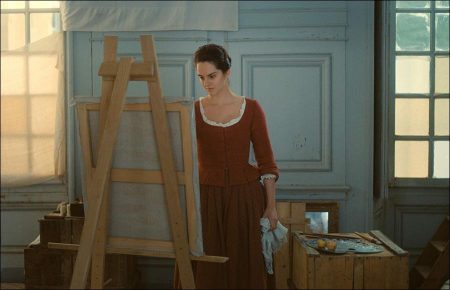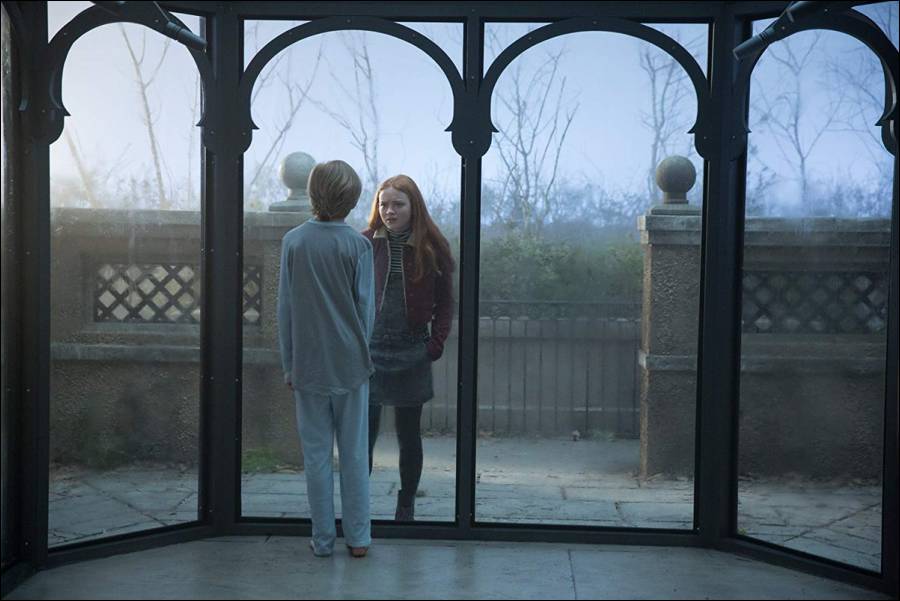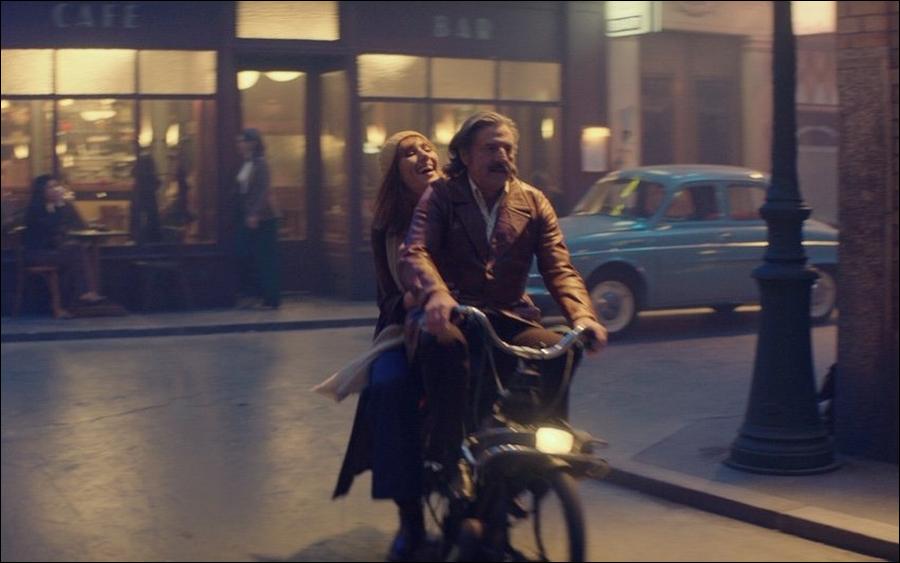France, 1760. Marianne is commissioned to paint the wedding portrait of Héloïse, a young woman who has just left the convent. Because she is a reluctant bride-to-be, Marianne arrives under the guise of companionship, observing Héloïse by day and secretly painting her by firelight at night. As the two women orbit one another, intimacy and attraction grow as they share Héloïse’s first moments of freedom. Héloïse’s portrait soon becomes a collaborative act of and testament to their love.
Portrait of a Lady on Fire (French: Portrait de la jeune fille en feu) is a 2019 French historical drama film written and directed by Céline Sciamma, starring Noémie Merlant and Adèle Haenel. Set in France in the late 18th century, the film tells the story of a forbidden affair between an aristocrat and a painter commissioned to paint her portrait.
Portrait of a Lady on Fire was selected to compete for the Palme d’Or at the 2019 Cannes Film Festival. The film won the Queer Palm at Cannes, becoming the first film directed by a woman to win the award. Sciamma also won the award for Best Screenplay at Cannes. The film was theatrically released in France on 18 September 2019.
It was nominated for Independent Spirit Awards, Critics’ Choice Awards and Golden Globe Awards for Best Foreign Language Film and was chosen by the National Board of Review as Top Five Foreign Language Films of 2019.

Film Review for Portrait of a Lady on Fire
Céline Sciamma’s Cannes Screening Award for Best Screenplay, Portrait of a Teenage Girl with Flame, traces the memory of a glimpse of a glimpse of a paper-cut memory.
Whatever makes a portrait of a flamed young girl (Portrait de la Jeune Fille en Feu, 2019) is such a mature love film and then turns it from being just a love film, it is necessary to pursue it. The value of the film breathes right there. Although it may seem like it, we are not in one of the stories of the artists who fell in love with the model.
There is no concept of that uninspired “muse“. Behold the painter inside of the artist, the ability of the woman who has just made the contribution to the art as you like so much that you like the inspiration, you can come to believe in the existence of what is called; Portrait of a flamed young girl is not that movie. It is the film of the deepest breath, a heart ache overflowing from the chest décolleté of the tightly corseted clothes, which has become infiltrated but never passes. Maybe you can’t reach the cinema chair on the other side of the curtain, but it still seems to smell the salty smell of the sea. In 18th-century Brittany, it’s as if we’re at the farthest end of the world. In the age of fast films, we learn to look and see again.
Director and screenwriter Céline Sciamma gives the audience little by little. When the time comes, to make him appreciate it. Just like the spontaneous deprivation experienced by the period film characters, the audience is deprived of everything up to a point. For example, music is merely the reward of milestones. Time is limited, everything has to happen before a portrait is completed. We have to wait a long time for the first smile. The first look comes from a home after a tiring journey and a seemingly impossible task. That’s why we are stunned, just like Marianne, in the first scene where Héloïse, introduced to us only as a vicious blond, runs to the edge of the cliff and stares enthusiastically.
We have a young girl dreaming of running, not dying. She’s excited about a new book. Because he doesn’t have to read the same book a hundred times. He’s so hungry for music, that’s why he goes to church. He’s planning to swim, but he doesn’t know if he knows how to swim. Moreover, after entering and leaving the sea, he is not sure of the answer to this question. Even the biggest secret that the film keeps from Héloïse is explained to the character so spontaneously, and it gets such a natural reaction that Sciamma doesn’t need more than looks. And memories. Two castle holding film standing. Cinematographer Claire Mathon’s camera seeks to capture marvelous frames and unforgettable moments. So successful in this, we remember moments, not events when the film ends. Just as good movies always do. But that’s not all.
It’s a miracle that romance isn’t content with being a love film by the Portrait of a Flared Young Girl, who has escalated to a peak where the first and last look is far more valuable than the first and last touch. Marianne and Héloïse’in flowing like water, except for a subtle, friendship / companionship on the one hand watching the film. There are men we don’t know. A former painter who tried to portrait Héloïse.
The guy who got Maid Sophie pregnant. Her father was a painter who taught Marianne how to paint. He’s waiting for a portrait of Héloïse in Milan. Each of these men brought the women in the film to their current position, but they are not part of the story. They don’t matter. They consist of a signature, a title, a few brush strokes and a few million sperm. Women don’t even talk about them when they talk to each other. These are the chats that will delight Alison Bechdel, who designed the Bechdel test, one of the most famous techniques of measuring women’s representation in the films, and this is not a coincidence.
Especially when the Countess leaves the house, the friendship of the three women who struggle differently at different levels of society turns into a happy fantasy that will last forever, but surely will be interrupted. This section adds a few dimensions to the film, including a touching but vigorous abortion scene that has turned all cold abortion scenes up to now. Even if you don’t know anything about it, you’re so sure that you’re watching a film that looks out of a woman’s eye and passed through a woman’s sieve. This is a revolutionary detail that reveals the concept of “muse ğı to which the film opposes, giving the strings to Euridice in a single moment. What if it was Euridice’s command, not curiosity or fear that made Orpheus look back at the last minute? What if the beautiful Euridice is braver than the talented Orpheus?
Like Euridice, Héloïse is the main driver of this story. This is the best surprise of the film. Although the whole film is based on how Marianne remembers the past, she is Héloïse, who knows how to say goodbye and remind herself when the time comes. That’s what makes that double finale so memorable. Céline Sciamma says the whole film was written to shoot the final scene of Héloïse. So we just watched this movie with respect to the face of that scene. A very, very beautiful scene. It’s a good thing he didn’t follow his own command in the final, Euridice, and it’s a good thing he didn’t turn to Orpheus.
Portrait of a Lady on Fire (2019)
Directed by: Céline Sciamma
Starring: Noémie Merlant, Adèle Haenel, Luàna Bajrami, Valeria Golino, Christel Baras, Armande Boulanger, Guy Delamarche, Clément Bouyssou, Michèle Clément, Cécile Morel
Screenplay by: Céline Sciamma
Production Design by: Thomas Grézaud
Cinematography by: Claire Mathon
Film Editing by: Julien Lacheray
Costume Design by: Dorothée Guiraud
Set Decoration by:
Art Direction by:
Music by: Jean-Baptiste de Laubier, Arthur Simonini
MPAA Rating: R for some nudity and sexuality.
Distributed by: Hulu
Release Date: December 6, 2019
Visits: 111





